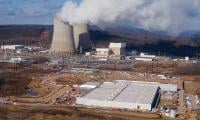Water security is an undeniably vital issue that establishes one of the greatest difficulties to Pakistan’s advancement.
With the expected population of 263 million in the year 2050, Pakistan needs to put genuine idea into how it will give sufficient water to agribusiness, industry, and human utilization even with quickly diminishing stores. Pakistan is among the countries that can run dry in near future. To mitigate this issue, Pakistan is moving forward to construct dam.
Other than the water storage problem, Pakistan has other challenges as well regarding the water sector. The main problem is definitely the water storage. Presently Pakistan has thirty days storage only. To increase this capacity; small, medium and large scale dams are required. Water logging and salinity also demolishing the agriculture sector of Pakistan.
The convenient way to solve this issue is lining of canals and the optimal use of water for agriculture. Pakistan should define the groundwater ownership, and legislation for licensing of groundwater, and increase the groundwater recharge for urban and rural areas under legal framework. Otherwise ground water depletion will lead to the severe droughts in Pakistan.
To control Water pollution including both the surface water pollution and groundwater pollution is a tough task to handle. The authorities have to work on the implementation of national environmental quality standards, incentives should be given to industrial sector in form of subsidies and tax relaxation against the installation of waste water treatment plants and to impose fine on the polluter pay plenty rule. Wastage of water needs to be controlled by adopting more crop per drop technologies for agriculture.
Laser levelling, drip irrigation and sprinklers can help to minimize water wastage at farm level. By drip irrigation, there will be no wastage of water through the evaporation. A sprinkler washes the leaves of plants and increases the photosynthesis. Pakistan has a long history of Inter-provincial disputes that did not allow the government to construct dams.
To resolve this problem, positive awareness should be raised, and agro-climating zoning should be preferred instead of provincial boundaries for water resources. Rather on the basis of land, it should be provided on the basis of crop. Different sectors require different quantity of water, so building the institutional capacity of government in order to quantify the demand by installation of meters and reduce the requirements by optimisation of its usage in all the sectors.
The experts affirm that the demographic transition and urbanization are the main causes of the crisis. To make these issues less severe, water sector demand the financial resources. Allocation of Public sector development program fund can help in improving the public sectors.
Mainstreaming environmental change concerns should help accomplish feasible improvement, including eco-framework conservation and proper administration and use of water.
—By Muhammad Faizan Ashfaq Government College University Lahore BS (Hons) Environmental Science















